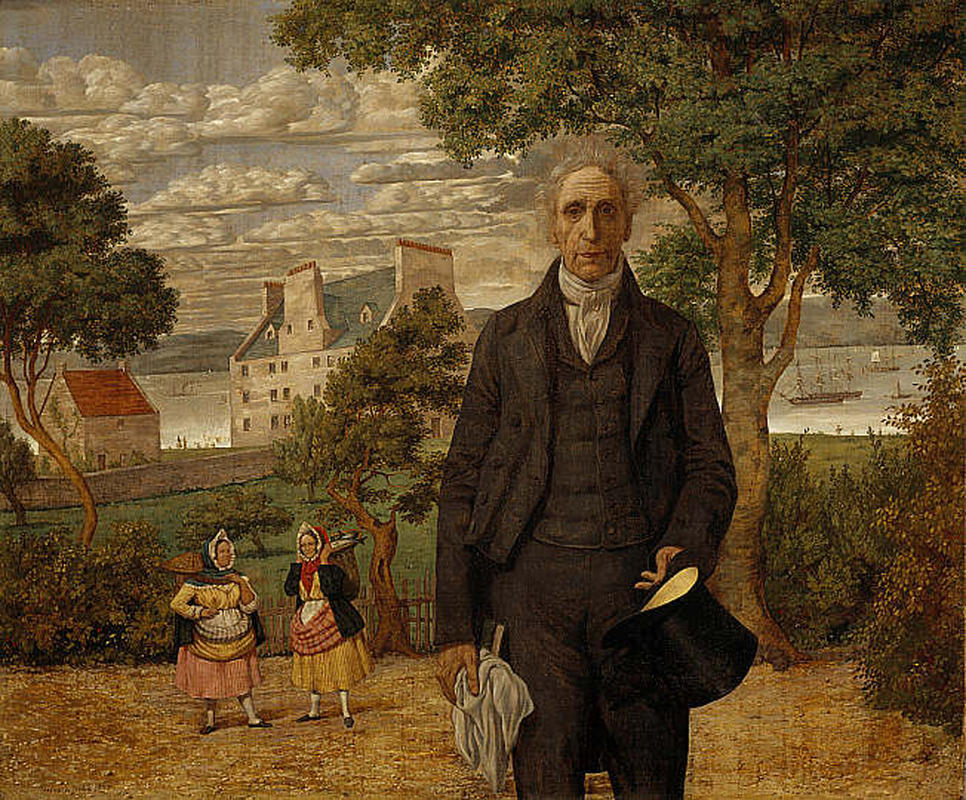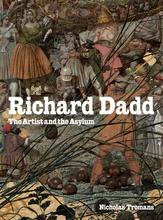More about Sir Alexander Morison
- All
- Info
- Shop

Sr. Contributor
If you’re up to date on your pop culture then you might know what an alienist is thanks to the television drama of the same name.
Until that show’s recent emergence, however, you would probably think it had something to do with creatures from outer space. You would be wrong. Instead, an alienist is an old term for a psychologist or psychiatrist, occasionally still used to refer to the work that a forensic psychologist does today. Artist Richard Dadd would know plenty about that since he spent four decades in insane asylums after murdering his father. That’s where he met Sir Alexander Morison, the alienist depicted in the painting.
Perhaps Dadd’s own mental distress accounts for the anguish that permeates the image. However, there is more to it than that. The distress also emanates from the portrait’s subject because he was going through a terrible time when he commissioned the image. He'd held high hopes for his career, which ended rather unceremoniously, and he was forced into retirement. In his obituary, he was called kind and beloved by patients but notably not so smart. During his lifetime he was regularly compared to medical lecturer John Conolly, and never too favorably.
Morison arguably contributed to the history of mental health treatment, particularly through lectures, and looking back much can be said about those contributions. However, at the time, he struggled considerably, both to gain respect and to make money. He certainly needed the money since he had a large family. By some accounts, he had as many as sixteen children, although many didn’t live to adulthood. It’s no wonder he looks miserable in his portrait.
In the painting, Morison is depicted standing in front of his own estate in Edinburgh. Of course, since Dadd was locked up for most of his life, he certainly never saw the man there. He painted that part of the image based on a sketch that Morison’s own daughter had drawn. One of Morison’s descendants included a copy of the image in a book about the family, saying that it really isn’t the best likeness of the man but that he liked how the background was depicted. Dadd added fisherwomen in the background, likley painted based off of photos by David Octavius Hill and Robert Adamson. Therefore, even though Dadd was painting someone that he knew very well, the image looks a little bit “off” because so much of the composition is drawn from images by other people.
There is an even deeper level of intrigue to Dadd’s portrait. He created it at a time when the psychiatric world was confronting differing beliefs about what madness looks like. Morison was known for studying physiognomy, promoting the idea that you can see the features of insanity in someone’s face. In other words, you can look at someone and see whether or not they are crazy. Arguably, Dadd thought that the idea was ridiculous. While painting under Morison’s care, he didn’t opt to paint faces that depicted insanity (a topic he would cover in great detail in later years). However, when he painted Morison’s portrait, he infused it with more emotion than some of his other works. We’ll never know if he had come to see something in the doctor’s face or if this was a bit of mockery for the physician’s beliefs about physiognomy.
Sources
- Doyle, Derek. “Notable Fellows: Sir Alexander Morison.” J R Coll Physicians Edinb. 2011. Accessed November 6, 2018 at https://www.rcpe.ac.uk/sites/default/files/notablefellow_2.pdf
- Morison, Alexander. "Publications: The Blackhalls of the ilk and Barra, herditary coroners and foresters of the Garioch.” 1905, Issue 29. Accessed November 6, 2018 at https://books.google.com/books?id=6n0uAAAAMAAJ
- Russell. G and Huddleston, Samuel. “Richard Dadd: The Patient, the Artist, and the “Face of Madness”.” Journal of the History of the Neurosciences. Jul-Sep 2015, Vol. 24 Issue 3, p. 213-228.
- Scull, Andrew etl al. “Masters of Bedlam: The Transformation of the Mad-Doctoring Trade.” Princeton Legacy Library. 1996. Accessed November 6, 2018 at https://books.google.com/books?id=w04ABAAAQBAJ

Contributor
Richard Dadd painted Alexander Morison while in his care at the Bethlem Hospital for the criminally insane.
Though named after Saint Bethlehem, the asylum nonetheless has a checkered history going all the way back to 1247. Some time in the 14th century Bethlem gave rise to the term "bedlam" which used to mean mental asylum, but now means a scene of confusion, which is pretty fitting once you hear about the hospital.
Dadd had already made a name as a painter and sketcher when he landed in the asylum for killing his father on behalf of the Egyptian god of the underworld Osiris. Alexander Morison came to Bethlem as a well-known reformer of psychiatric care and supported Dadd’s painting, which sounds good until you hear what he believed in...
Morison campaigned for physiognomy, a belief that person’s facial expressions reveal the underlying mental condition. Riiiiight. It seems Dadd turned the tables on the wacky doc, giving him an expression that pretty clearly shows he's loony tunes. We're getting Beetlejuice vibes from his pale visage, old time-y suit, and freshly electrocuted hair. Apparently Morison was forced to retire against his will at 73 so he may be forgiven for looking haunted and tired.
All the sources online say that the stocky little women are ‘fishwives," which seems a weird (not to mention objectionable) term for women selling fish. Clearly they are not married to the fish. Anyhow, its all a clear sign the scene is not set in Southwark, the part of London where the asylum was located in those years, but in the country near Morison's estate. Home at last, free to make whatever funny faces he wants to. If only Dadd were so lucky.












